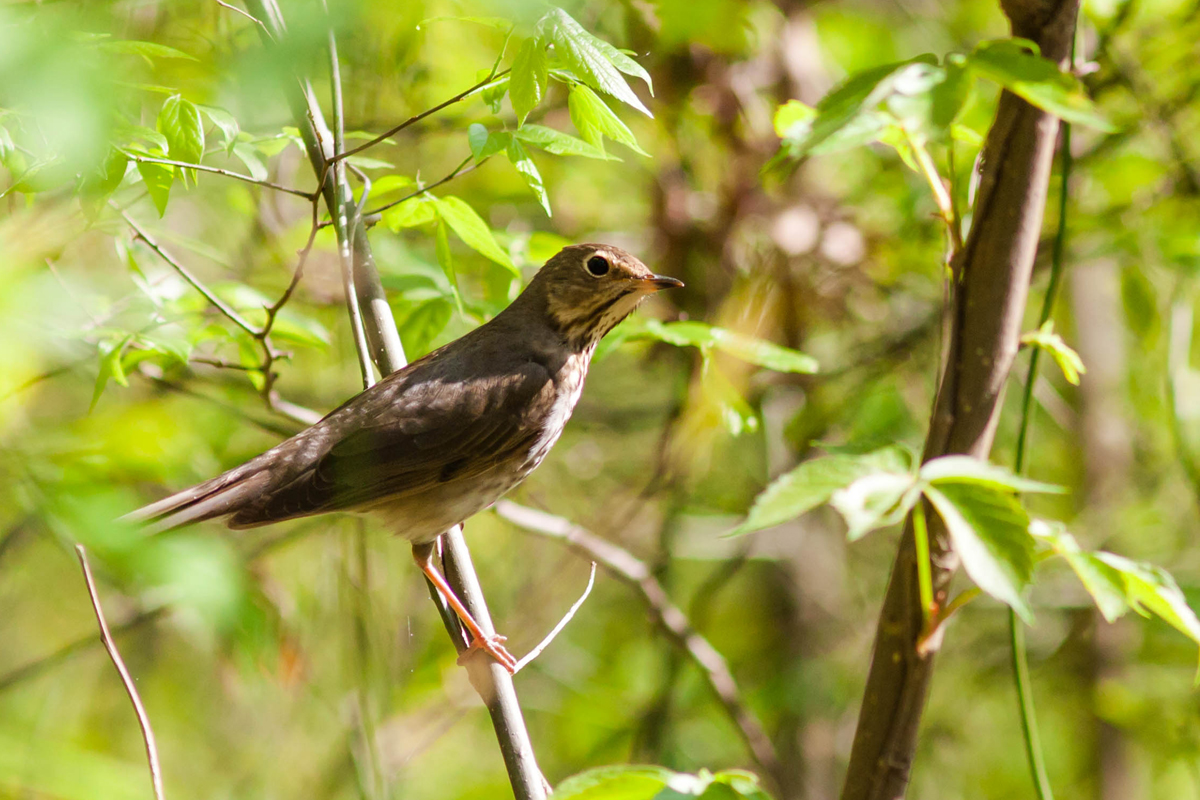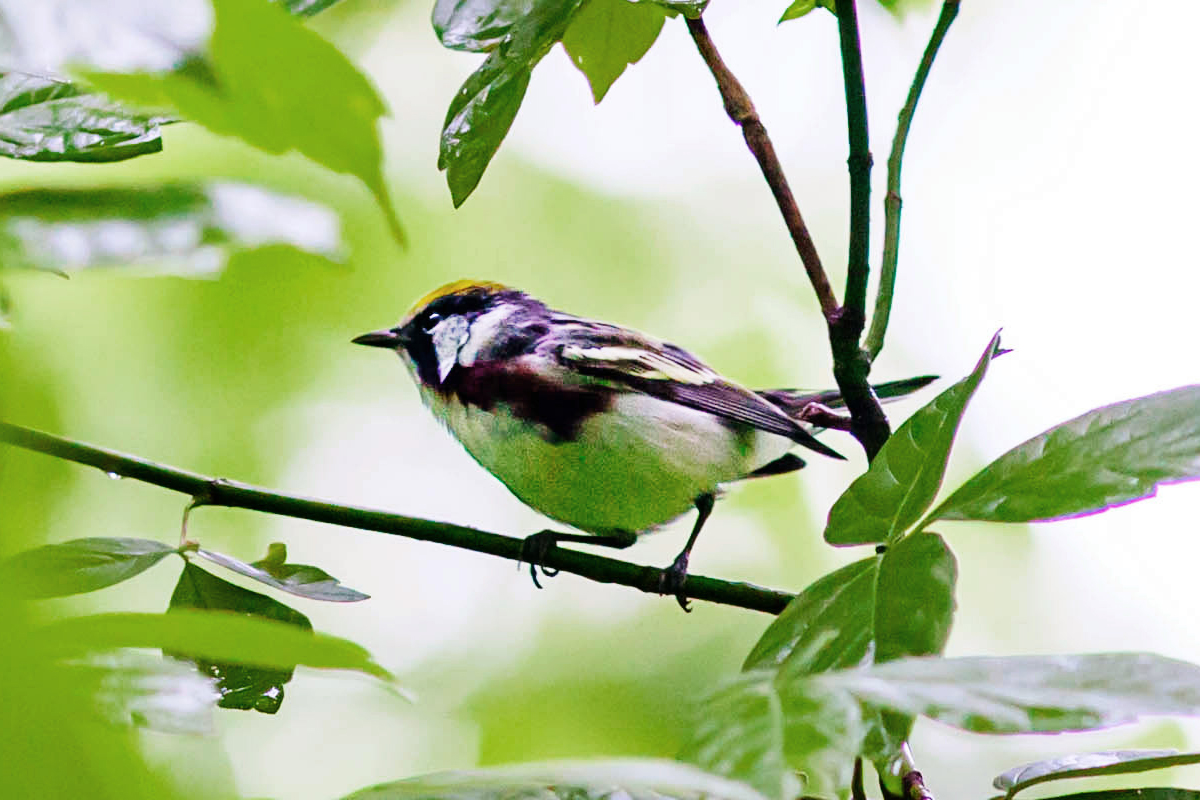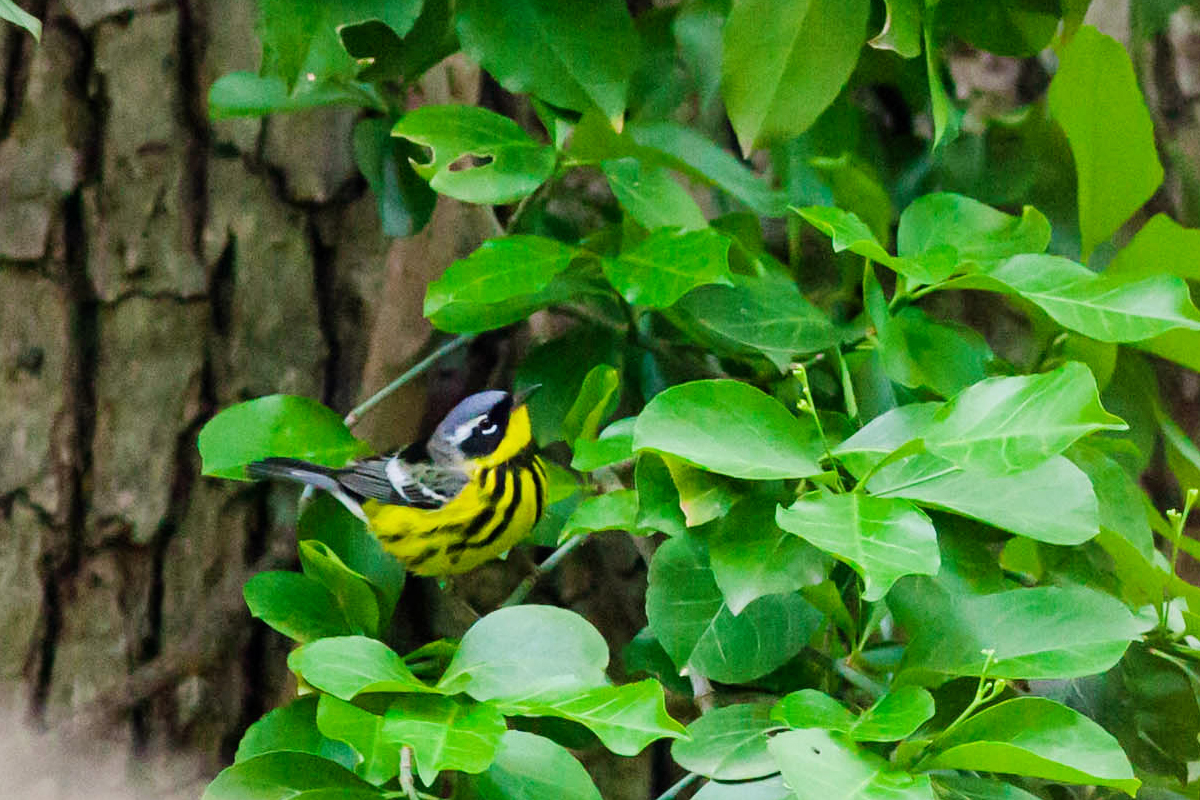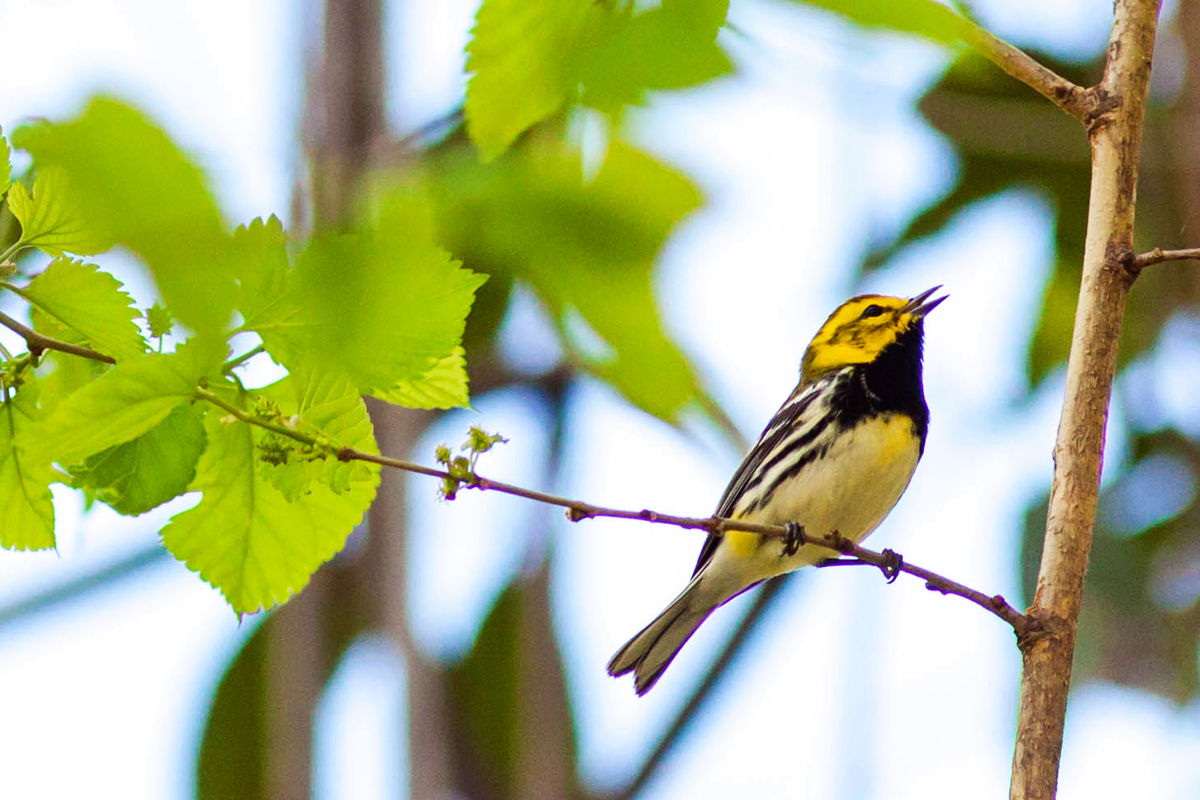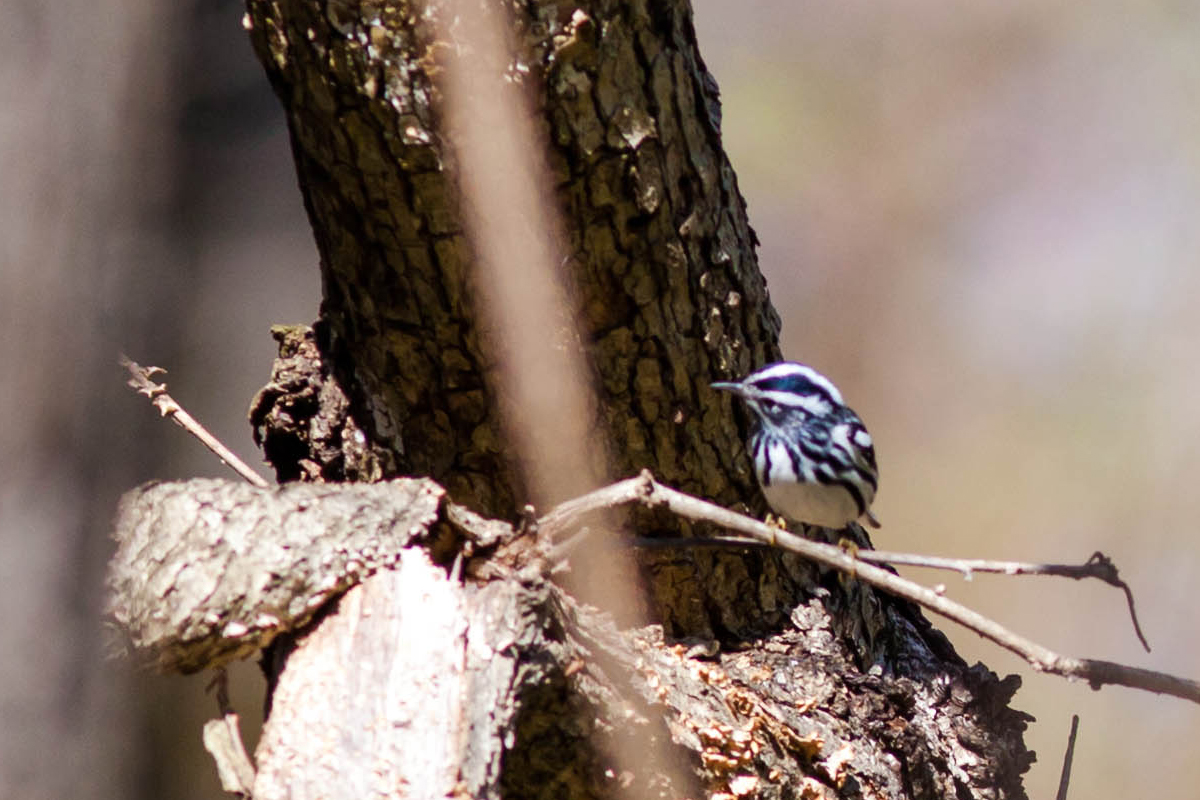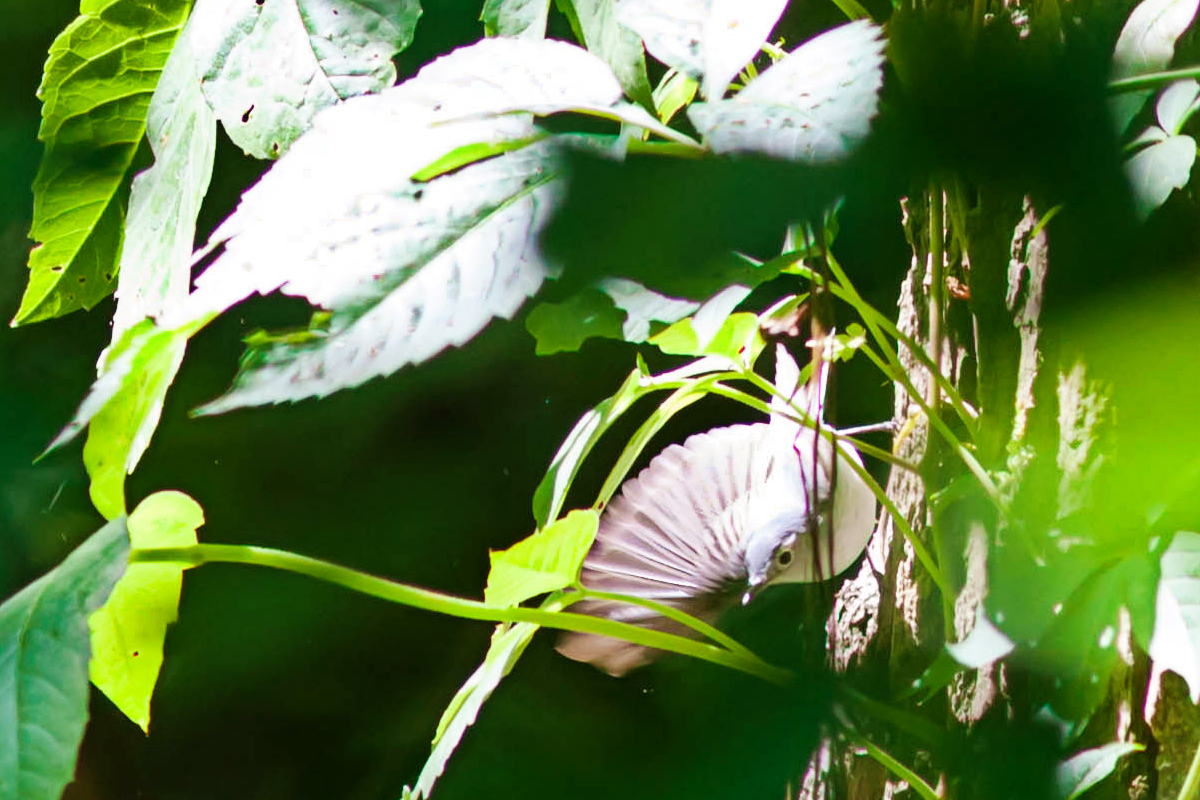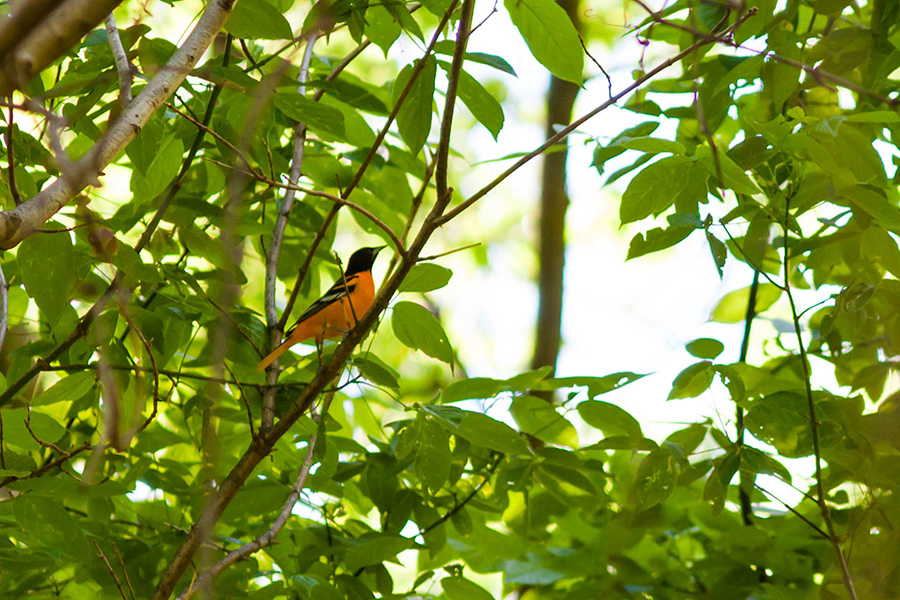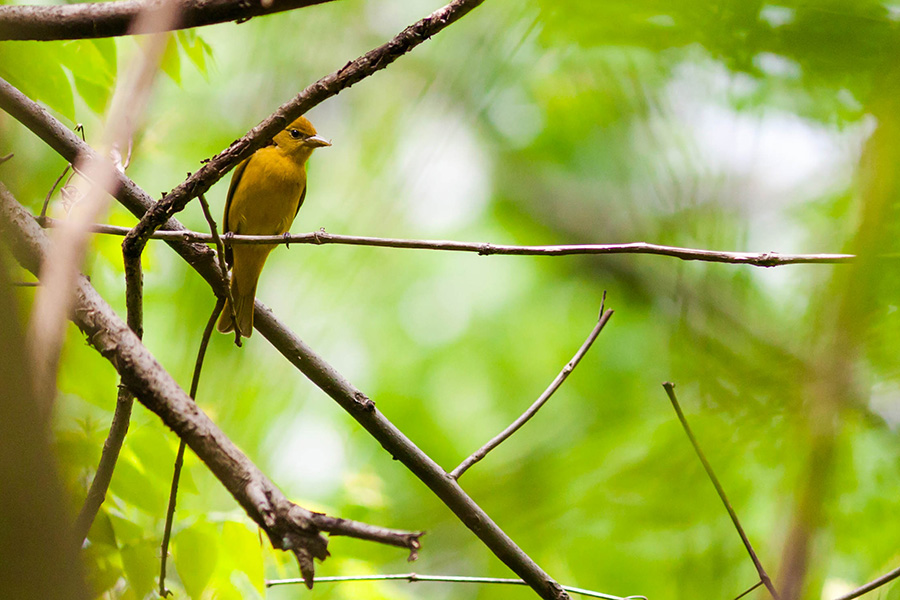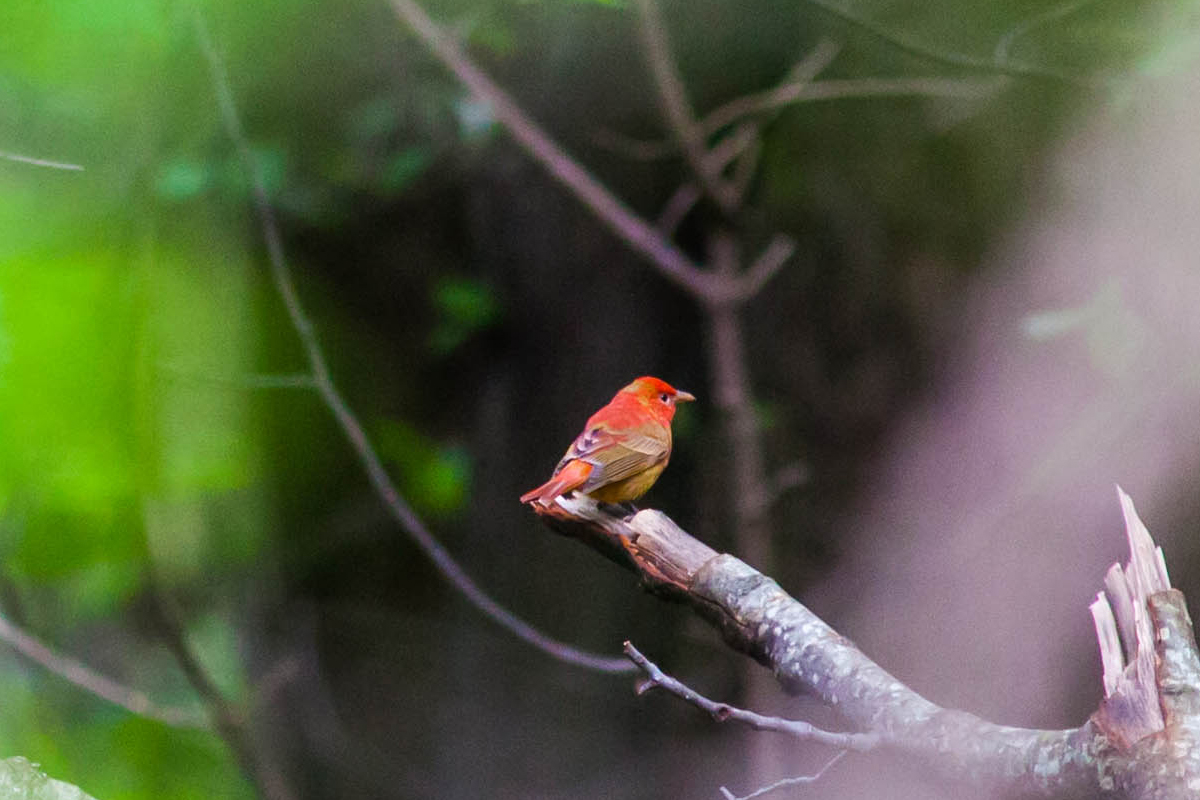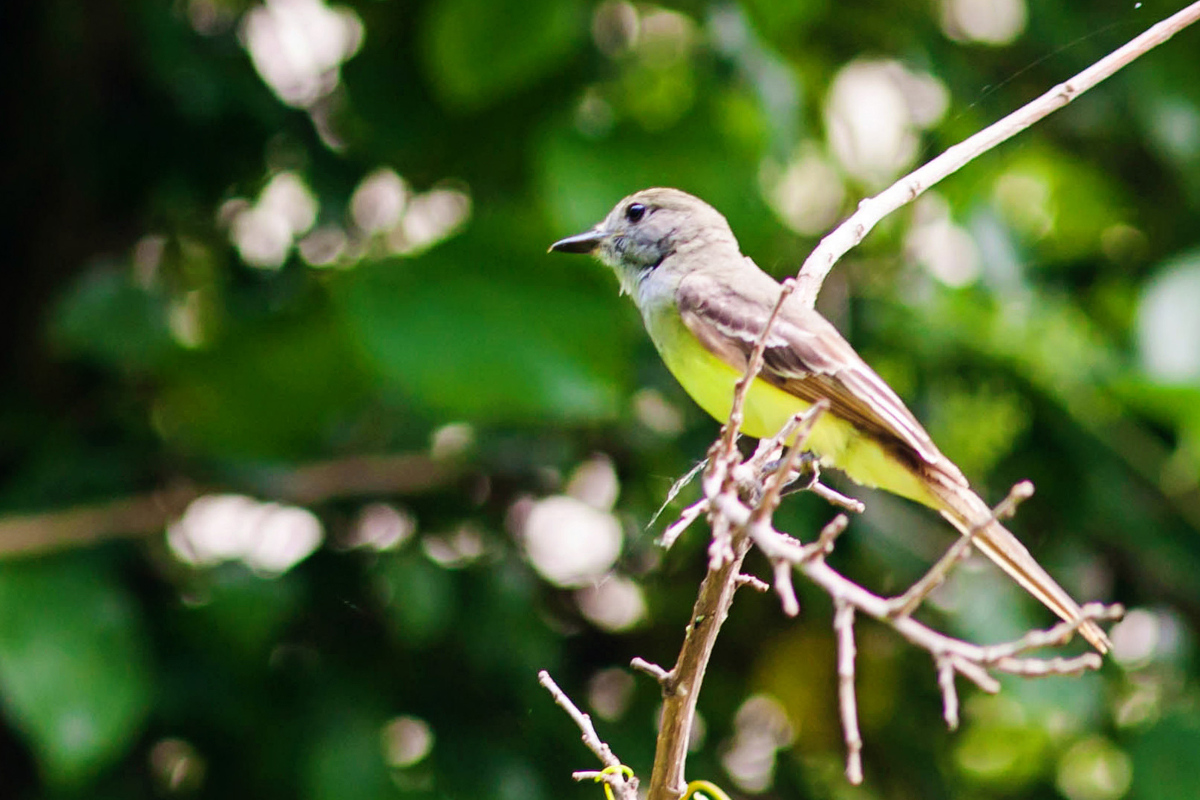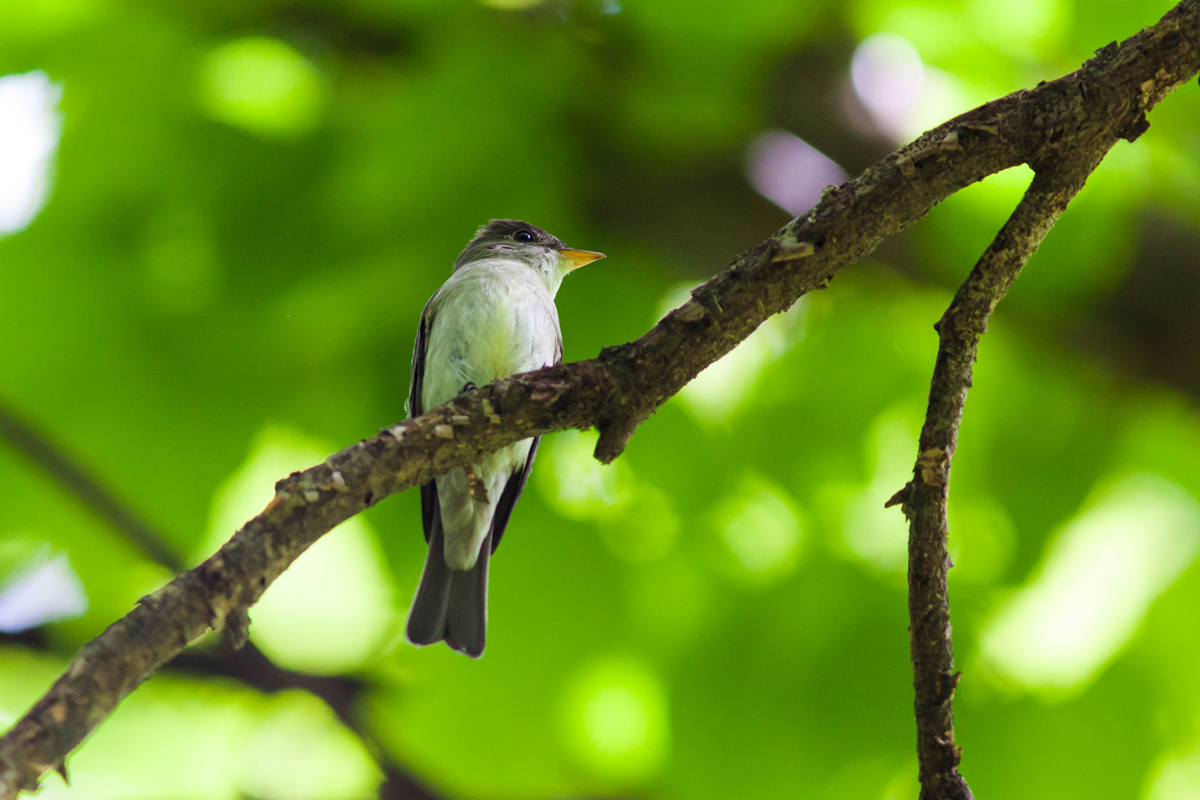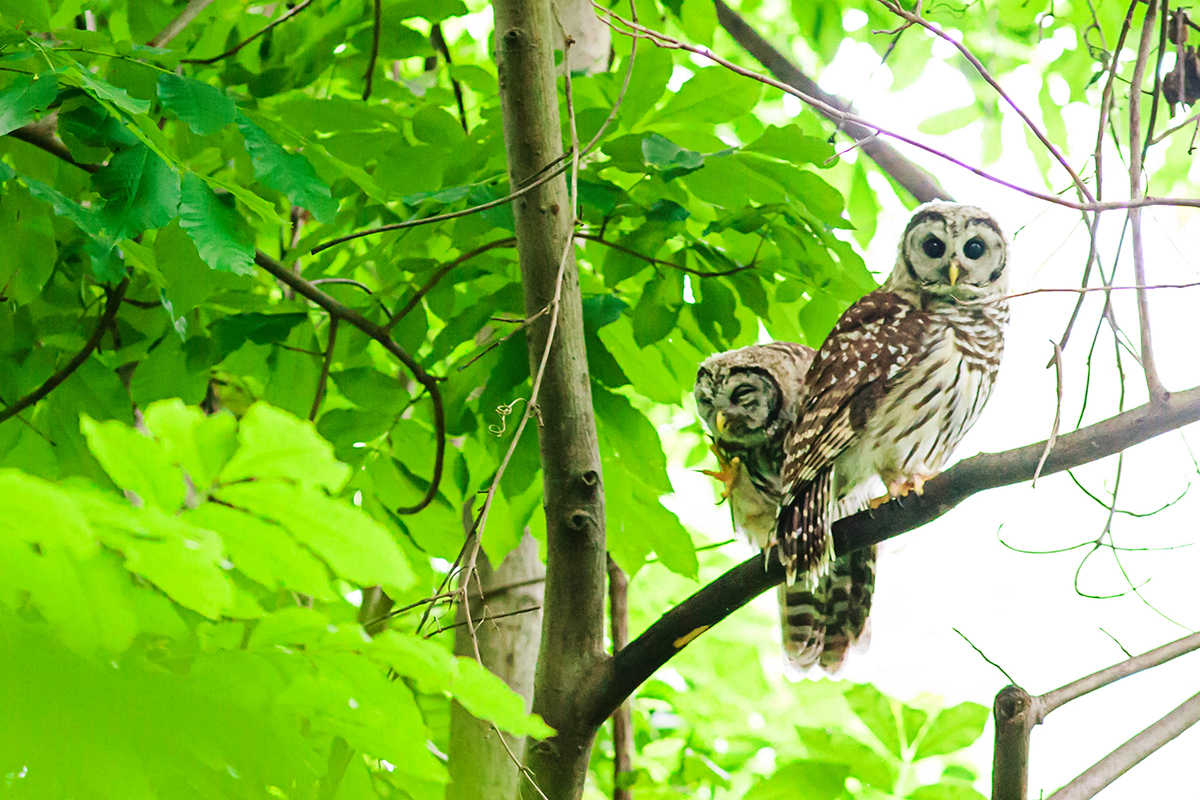Notes from Spring Bird Migration
After spending the winter getting to know the cold-weather residents of the Old Forest, I had even more fun watching spring slowly arrive. The wildflowers put on their dazzling show, changing the browns and grays of winter into bold hues of yellow, green, and purple. And the birds quickly followed suit–bright orange, yellow, and red birds began to appear and make their voices heard.
Some of these birds will stick around for the whole summer, nesting and breeding in the forest. Others only visit for a few weeks on their way to breeding sites far to the north. Either way, early spring is a wonderful time to see birds in the Old Forest because the trees are just beginning to leaf out, and there are fewer places for the birds to hide. Even now that summer has arrived, you may still have some good sightings near the edges of the forest. (The East Parkway parking lot is a great spot to spend a morning scanning the trees.) I wanted to share a few photos of recent birds I’ve seen in the park.
We’ll start with some of the spring migrants. I was lucky enough to go for a walk in April with local birder extraordinaire Kate Gooch, and she pointed out this Swainson’s thrush on the side of the Old Forest roads. They’re generally pretty shy and prefer dense cover, but their songs and “peeps” let you know they’re around.
The charmers of spring migration are the warblers. More than 30 species come from Central and South America to North America to breed, passing over the Southern states on their way. They fly by night, and in the daytime can be found in newly-budding trees, where there are lots of insects for them to eat. I saw a great number of chestnut-sided warblers in the woods this spring, singing their “pleased-to-MEET-YA” songs.
The magnolia warbler can be identified by its black mask and “necklace.”
The Tennessee warbler is named not for its usual habitat (it breeds at least 600 miles to the north of Tennessee), but because an ornithologist identified it in Tennessee during spring migration. It’s a rather drab-looking bird, but its song completely filled the Old Forest while it was here for a few short weeks this spring. It sounds similar to a car starting–slowly, and then growing louder and faster toward the end.
The black-throated green warbler sings a “zoo-zee” song persistently–sometimes hundreds of times per hour.
The black-and-white warbler is one of the earliest migrants, and indeed was the first “new” bird I saw this spring. It breeds here in the summer, so if you look carefully you might see them plucking insects from moss or skittering along the bark of a tree.
If you’ve walked in the forest at all over the last few months, you’ve probably heard the blue-gray gnatcatcher. It gives short, nasally calls almost constantly. Like the mockingbird, it incorporates bits of other bird calls into its songs. It’s much tinier than the mockingbird, though, and tends to disappear into the treetops.
Baltimore orioles bring a distinctive and beautiful song to the forests. This is a male, who was very high up in the branches. You can attract these birds to backyard feeders by putting out ripe fruit (although I personally attracted nothing but mockingbirds and ants with this technique!).
I had originally labeled this one as a female Baltimore oriole, but I wasn’t 100% sure of the ID because I never got a photo of her wings. Dr. Stephan Schoech, an ornithologist at the University of Memphis, says it’s more likely a female scarlet tanager. I haven’t seen a male (with its bright red body and black wings) this year in the forest, although they’re notorious for cloaking themselves in leaves high up in trees. Guess that means I’d better learn their songs… (Thanks for the assist, Dr. Schoech!)
I have, however, seen the other tanager that frequents our area. The male summer tanager is the only all-red bird on our continent. This particular bird is a juvenile male, which means he still has an olive-colored wash to his feathers. He’ll grow up and assume a completely strawberry-red hue. These birds stay high up in trees, so I’ve found the best way to recognize them is by their three-syllable “pi-ti-tuck” call.
This relatively big songbird has quickly become one of my favorites. The great crested flycatcher is fairly easy to spot, especially after you learn that the high-pitched “yeeowp!” that echoes through the forest belongs to it. You may also find these throughout your neighborhood; they’re the only flycatchers in this part of the country that nest in cavities, so they may use backyard nesting boxes.
If you’ve ever walked through the woods and thought you’ve heard a cat meowing, it’s likely that you’re hearing the call of the gray catbird. Like its relative the mockingbird, it appropriates pieces of other bird calls, stringing together a song that can last up to 10 minutes.
The eastern wood-pewee is a small flycatcher, a group of birds that are notoriously hard to identify compared to each other. The pewee’s comparatively long wings are a clue, and its trilling “pee-a-wee!” call makes it unmistakable. Their behavior is also fun to watch–they choose a spot high in the tree canopy and then sally out to catch insects, returning to the same spot over and over. When they have young to feed, they may make these sallies more than 60 times an hour.
If you’ve spent any time on the Greensward recently, you may have been treated to an airshow of sorts: dozens of Mississippi kites flying back and forth, probably protecting their nesting sites. They are raptors who can be identified in flight by the triangular shape of their tail. West Tennessee is the only part of the state that regularly sees these birds; they’re more abundant in the Great Plains and further south.
Finally, we have a bird that lives in the Old Forest year-round: the barred owl. These birds are active at night, but it’s not uncommon to stumble upon a roosting group during the day. On this particular morning, I was walking on the dirt trails when a thunderstorm came up. I started to race back out and to my car, and then remembered that the forest functions as thousands of umbrellas, so it was probably the driest place I could be. So I kept walking, and was following the sound of a loud chirping. I believe the chirping turned out to be a robin, but while I was standing still, a loud whining noise started coming from over my head. I looked up to see an owl flying onto a branch, and then a second one about ten feet below. While I was photographing the one on the top branch, a third owl swooped in and stared right at me, nearly knocking the first one off the branch. I took this photo right at that moment, and you can see that the owl on the left is squinting from the impact and holding up a foot, trying to get its balance. This was really a special treat!
Summer is a great time to get to know the birds that nest in our area. And fall migration can actually begin as early as July for some birds, so you truly never know what you’re going to find when you venture into the Old Forest.

